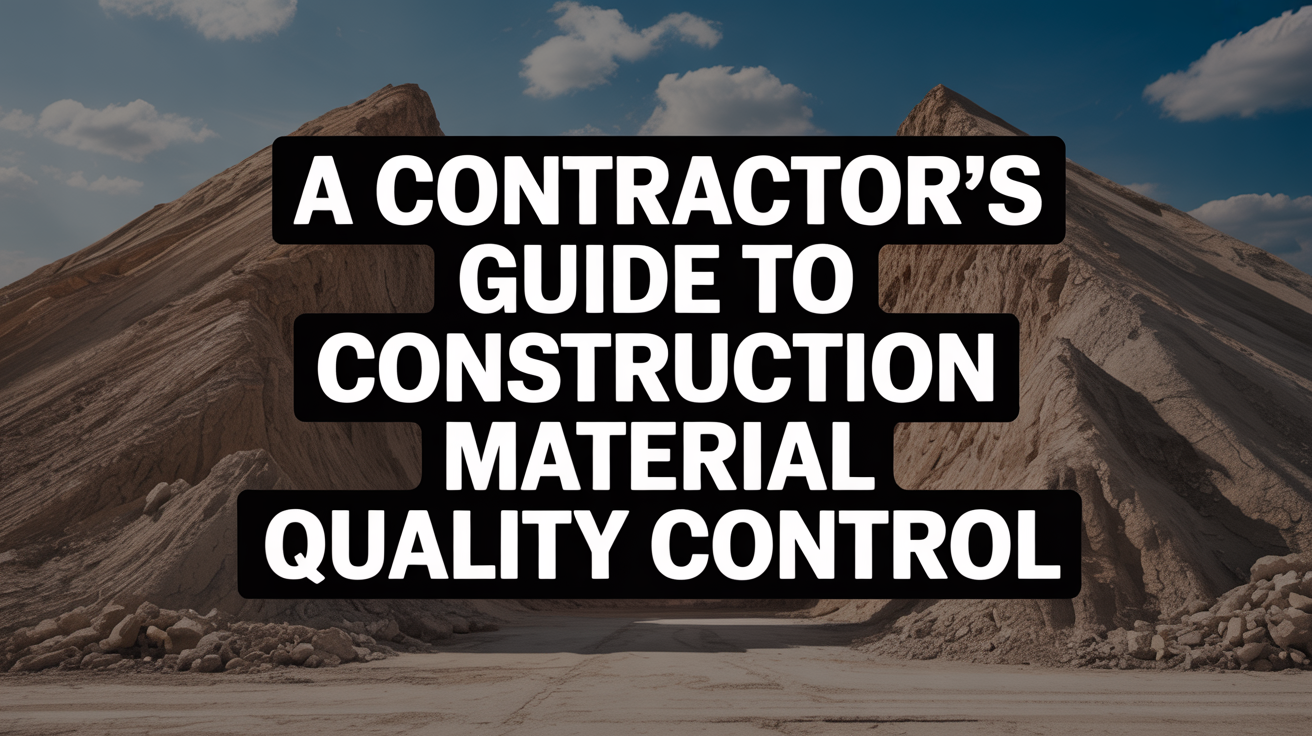Best Practices for On-Site Material Storage and Handling in Construction
Introduction
On-site material storage and handling might not be the most glamorous part of construction, but it’s one of the most critical. Efficient storage ensures that materials are available when needed, reduces delays, and keeps workers safe. Poor practices, on the other hand, can lead to costly mistakes, accidents, and project setbacks. Imagine a scenario where materials are damaged by rain or a worker trips over poorly stacked supplies-these issues can derail even the best-laid plans. 😬
In this article, we’ll explore the best practices for on-site material storage and handling that every construction professional should know. From planning your storage layout to securing hazardous materials, we’ll cover all the essentials to help you run a safer, more efficient job site. Let’s dive in! 🚧
1. Importance of Proper Material Storage and Handling
Proper material storage and handling are the backbone of any successful construction project. When done right, they ensure that materials are ready for use, reducing downtime and keeping the project on schedule. For example, having lumber stored close to where it’s needed minimizes the time workers spend fetching supplies. Plus, organized storage areas reduce the risk of injuries caused by tripping hazards or falling objects. 🛠️
Beyond timelines and safety, proper storage also saves money. Damaged materials mean wasted resources, and replacing them can blow your budget. By implementing smart storage solutions, you can minimize waste, protect your investment, and keep costs under control. Clearly, the benefits of good storage practices extend far beyond just keeping things tidy. 👷♂️
2. Site Planning and Material Storage Layout
Before the first shovel hits the ground, you need a solid plan for where and how materials will be stored. This starts with understanding the flow of work and identifying the best locations for storage areas. Think about accessibility-materials should be close enough to work zones to avoid long hauls but far enough to prevent clutter. 📐
Another key consideration is permits and approvals. Some sites may have restrictions on where heavy materials can be stored or how much weight the ground can bear. By addressing these factors early, you can avoid headaches later. Transitioning smoothly into execution, a well-thought-out storage plan sets the stage for an efficient and hazard-free job site. 🏗️
“Effective storage of materials in construction is essential for maintaining project efficiency, ensuring worker safety, and preventing material wastage.”
-Boom & Bucket
3. Selection and Preparation of Storage Areas
Not all materials are created equal, and neither are storage spaces. Flammable materials, for instance, require fire-resistant storage areas, while perishable goods need temperature-controlled environments. Environmental risks like flooding or high winds should also guide your decisions. Choosing the right spot isn’t just about convenience-it’s about safety and compliance. ⚡
“Material handling and storage in construction refer to the process of transporting, stacking, and securing materials for easy accessibility and safety. Proper material handling minimizes workplace accidents and improves workflow.”
-Boom & Bucket
Once you’ve selected a space, preparation is key. Clear the area of debris, level the ground if necessary, and install barriers or fencing for security. Taking these steps upfront ensures that your storage areas are ready to handle whatever materials come their way. After all, preparation today means fewer problems tomorrow. 🌧️
“Even a quick sketch of your laydown yard can go a long way toward efficiently running your project.”
-Procore
4. Organization and Housekeeping for Safety and Efficiency
A cluttered storage area is a recipe for disaster. Keeping things organized doesn’t just look good-it prevents accidents and makes it easier to find what you need. Labeling bins, racks, and pallets helps everyone on the team locate materials quickly, saving time and reducing frustration. 🏷️
“Store in covered areas or silos to prevent contamination and moisture absorption… Stack properly on raised platforms to prevent warping and rotting.”
-Boom & Bucket
Regular housekeeping is equally important. Schedule routine clean-ups to remove trash, unused materials, and potential hazards. A tidy site not only boosts morale but also sends a clear message: safety and efficiency matter here. As we move forward, remember that organization is an ongoing process, not a one-time task. 🧹
“Ensure that employees trained in emergency spill cleanup procedures are present when hazardous materials are being unloaded.”
-Tahoe BMP Handbook
5. Material Handling Methods and Equipment
Efficient material handling requires the right tools for the job. Forklifts, cranes, and pallet jacks are just a few examples of equipment that make moving heavy or bulky items safer and faster. However, using this equipment properly is crucial. Improper operation can lead to accidents, injuries, or damage to materials. 🚧
“Training your workers about the best practices can help eliminate some of the risks and dangers involved.”
-NY Engineers
Training is non-negotiable. Only personnel who are certified and experienced should operate heavy machinery. Additionally, always follow manufacturer guidelines and conduct regular maintenance checks to ensure equipment is in top condition. With the right tools and training, material handling becomes a seamless part of the workflow. 🛠️
“Some construction materials and chemicals can react to each other when put together… That’s why there’s a need to store materials and chemicals in different places.”
-NY Engineers
6. Stacking, Racking, and Securing Materials
Stacking materials may seem straightforward, but there’s a science to it. Industry standards, like those from OSHA, provide guidelines to prevent stacks from collapsing or sliding. For example, heavier items should always be at the bottom, and materials should be interlocked or secured to avoid tipping. 🔒
“Clear pathways for ingress and egress is essential to keeping projects on schedule and reducing the risk of injuries or accidents.”
-Procore
Investing in proper racking systems can also make a big difference. These systems not only maximize space but also keep materials stable and accessible. Whether you’re stacking bricks or steel beams, following these principles ensures that your materials stay safe and intact. Let’s keep those stacks steady! 🧱
“Proper storage of machinery and tools is crucial on any construction site. When equipment isn’t stored safely and efficiently, it can lead to damaged gear, project delays, and even injuries.”
-World Construction Today
7. Material Protection from Weather and Environmental Hazards
Weather can wreak havoc on construction materials if they’re not protected. Rain can warp wood, sunlight can degrade plastics, and extreme temperatures can compromise adhesives. Covering materials with tarps or storing them in weatherproof containers is a simple yet effective solution. ☔
“Space Limitations: Managing large volumes of materials in limited space.”
-Boom & Bucket
Site drainage is another factor to consider. Standing water can damage materials and create slippery surfaces. By addressing these environmental risks, you can preserve the quality of your materials and keep your site safer for everyone. Protecting your materials is protecting your project. 🌞
“Coordinating with the procurement team, contractors and project managers and cross referencing material deliveries with the master schedule will keep the yard and the project running smoothly.”
-Procore
8. Handling and Storage of Hazardous Materials
Hazardous materials demand special attention. These include flammables, chemicals, and anything that poses a risk to health or safety. Segregating these materials from others and clearly labeling them is essential to prevent accidents. 🚨
“Organizing and straightening the yard will help mitigate risk of injury or material damage. It also sends a clear message to crews and outsiders about the expectations of maintaining an organized, safe site.”
-Procore
Legal compliance is also critical. Regulations often dictate how these materials should be stored, transported, and disposed of. Ignoring these rules can result in fines or worse-serious incidents. By prioritizing safety and compliance, you protect both your team and your reputation. Stay vigilant! ⚖️
9. Security Measures to Prevent Theft and Vandalism
Theft and vandalism can cost construction projects dearly. Implementing security measures like surveillance cameras, controlled access points, and inventory management systems can deter criminals and safeguard your materials. A secure site is a successful site. 🔒
10. Waste Management and Disposal Protocols
Effective waste management starts with segregation-separating recyclables, hazardous waste, and general debris. Properly storing waste until disposal ensures compliance with environmental regulations and keeps the site clean. A tidy site is a professional site. ♻️
11. Training and Communication Across Teams
Training is the foundation of safe and efficient material handling. Regular sessions keep everyone updated on best practices, while clear communication ensures that all teams are aligned. Coordination between contractors, suppliers, and crews is vital for smooth operations. Teamwork makes the dream work! 🤝
12. Compliance with Regulations and Standards
Regulatory bodies like OSHA, local fire codes, and the EPA set the standards for material storage and handling. Non-compliance can lead to fines, legal trouble, or even project shutdowns. Staying informed and adhering to these rules is non-negotiable. Play it safe! 📜
13. Frequently Asked Questions (FAQ)
-
What are the main risks of poor material storage on construction sites?
Poor material storage can lead to damaged supplies, accidents, theft, and project delays. For example, improperly stacked items may collapse, injuring workers or causing costly disruptions. Avoid these risks by following best practices. 🚧
-
How often should material storage areas be inspected?
Storage areas should be inspected regularly-weekly or after major weather events, at a minimum. Documenting findings helps track issues and ensures timely corrective actions. Consistency is key! 📋
-
What types of equipment are essential for safe material handling?
Forklifts, pallet jacks, cranes, and proper PPE are essential for safe material handling. Each tool has its role, and using them correctly protects both workers and materials. Equip yourself for success! 🛠️
-
How can weather-related damage to materials be minimized?
Cover materials with tarps, use weatherproof containers, and ensure proper site drainage. These strategies protect supplies from rain, sun, and wind, preserving their quality. Be proactive! ☔
-
What are the basic rules for storing hazardous materials?
Hazardous materials should be segregated, clearly labeled, and stored in approved containers. Emergency readiness plans should also be in place. Safety first, always! ⚠️
Conclusion
Implementing best practices for on-site material storage and handling is a game-changer for construction projects. It enhances safety, boosts efficiency, and keeps costs in check. Proactive planning, regular training, and continuous improvement are the keys to success. 🏆
Now it’s your turn. Audit your current storage and handling practices, educate your teams, and commit to making ongoing improvements. By doing so, you’ll not only achieve better project outcomes but also set a higher standard for excellence in the industry. Let’s build smarter, safer, and stronger together! 🚀



